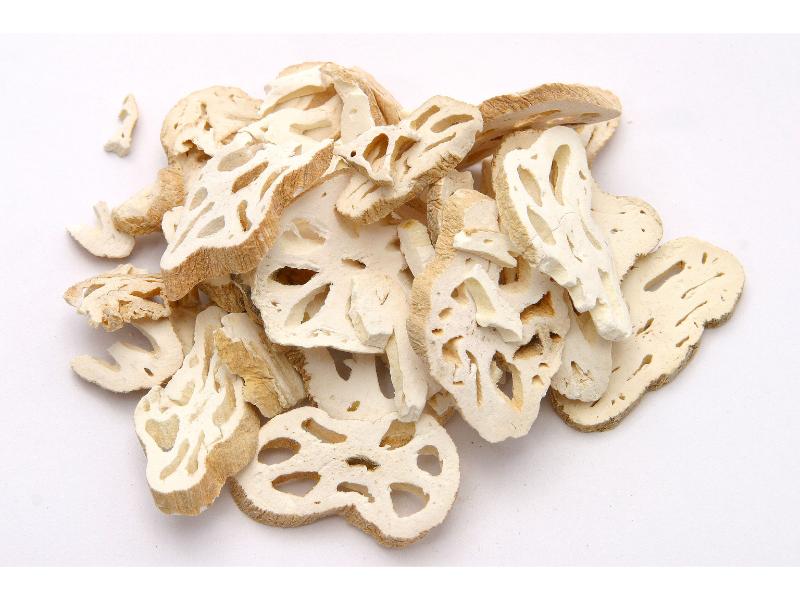Search in medicinals
Nelumbinis Rhizomatis Nodus
Lotus root node
藕节 〔藕節〕 ǒu jié

Alternate Chinese names: 光藕节 guāng ǒu jié; 藕节疤 ǒu jié bā
Kingdom: Plant
Origin in PRC Pharmacopoeia: Nelumbo nucifera Gaertn.
Origin in unofficial sources: Nelumbo nucifera Gaertn.
Use: Medicinal
Category: Blood-stanching agents / Astringent blood-stanching agents
Properties: Sweet and astringent; balanced; nontoxic.✽
Channel entry: Liver, lung, and stomach channels.✽
Actions and indications: Stanches bleeding with astringency; transforms stasis. Treats vomiting of blood (blood ejection); nosebleed (nǜ xuè); bloody urine; bloody stool; blood dysentery; flooding and spotting.
Dosage and method: Oral: Decoct (9–15g or up to 30g). Fresh product can be crushed to obtain juice. Also can be used in powder and pill preparations.
Product description: Lotus rhizomes may be spheroid or cylindrical in shape, 7–20 cm long and 5–8 cm thick and are joined together in linear array. The exterior surface is pale yellowish-brown. On the transverse cross section is a distinct configuration of eight holes, one in the center and seven encircling it. The node, which joins two rhizomes, is solid, sometimes with fibrous roots still attached, and scars left by the leafstalk bases. It is cut in such a way that a little of the rhizome, with its distinctive holes, is still attached.
Quality: Black nodes with white rhizomes are the best.
Production area: Zhèjiāng, Jiāngsū, ānhuī, Húběi, Húnán, Shāndōng, Jiāngxī, Fújiàn, Héběi.
Back to search result Previous Next